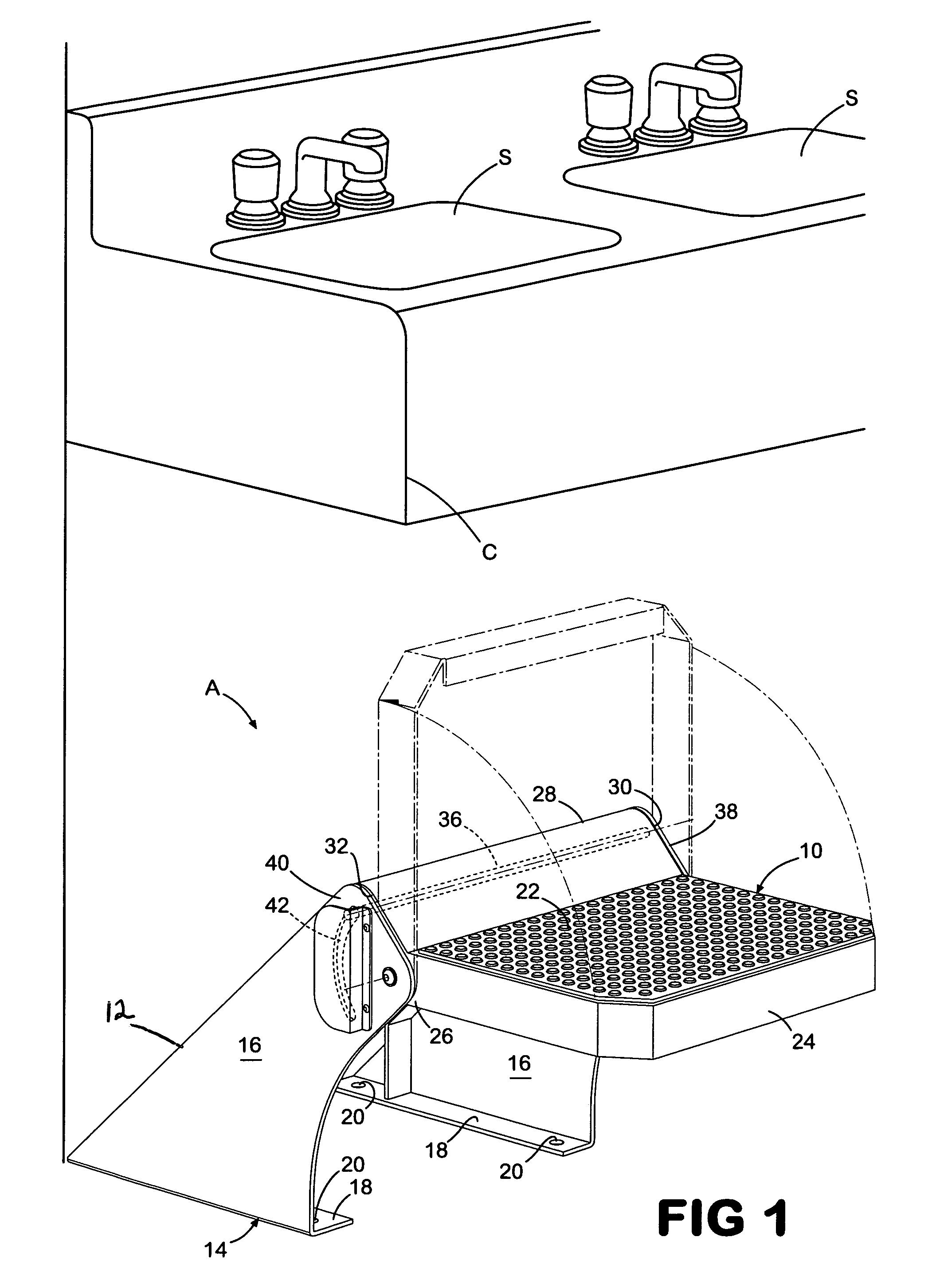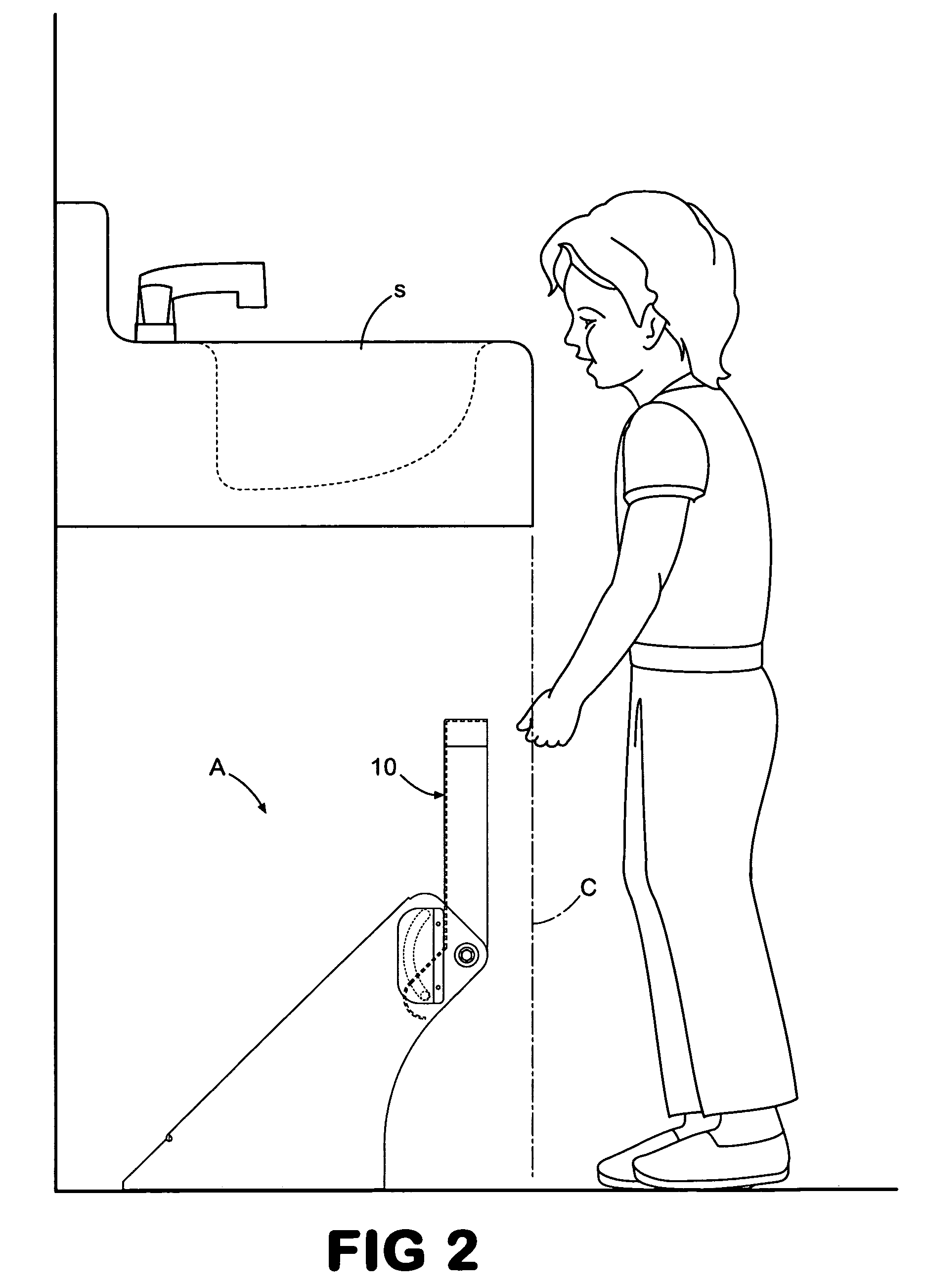Sink access device for a public restroom
a technology for public restrooms and access devices, which is applied in the direction of step stool, building scaffolding, physical therapy, etc., can solve the problems of not being designed for everyone, not being standardized in the design of restrooms, and being unable to identify specific requirements for restroom standardization
- Summary
- Abstract
- Description
- Claims
- Application Information
AI Technical Summary
Benefits of technology
Problems solved by technology
Method used
Image
Examples
Embodiment Construction
[0028]Referring now in more detail to the drawings, the invention will now be described in more detail.
[0029]FIGS. 1-3A illustrate a sink access device A in relation to a sink B in the sink access device is intended for use by a diminutive person, such as a child, in positioning the child who was originally unable to approach and utilize a sink into position for utilization of the sink. In this description, a child is in reference to any diminutive person who is unable to access a sink of a particular height without assistance.
[0030]As shown in FIGS. 1, 2 and 3, the sink has a general profile defined by the outer portion of the sink. This outer profile C may be defined by the sink itself or by a cabinet surrounding the sink which is commonly found at public restrooms. Hereinafter, the reference to the term “sink” means the sink, lavatory itself, or associated carpentry such as a countertop or vanity, wherein the sink is housed or carried.
[0031]The critical aspect of the invention is...
PUM
 Login to View More
Login to View More Abstract
Description
Claims
Application Information
 Login to View More
Login to View More - R&D
- Intellectual Property
- Life Sciences
- Materials
- Tech Scout
- Unparalleled Data Quality
- Higher Quality Content
- 60% Fewer Hallucinations
Browse by: Latest US Patents, China's latest patents, Technical Efficacy Thesaurus, Application Domain, Technology Topic, Popular Technical Reports.
© 2025 PatSnap. All rights reserved.Legal|Privacy policy|Modern Slavery Act Transparency Statement|Sitemap|About US| Contact US: help@patsnap.com



